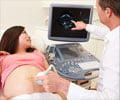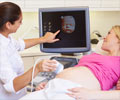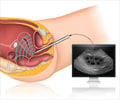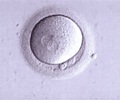Highlights
- Focused ultrasound method could considerably reduce tremors observed in Parkinson's disease
- The Parkinson's patients with tremor symptoms, who underwent the focused ultrasound procedure were //able to experience a significant improvement in their hand tremor after three months
- The focused ultrasound procedure has been approved by the U.S. Food and Drug Administration as a treatment of essential tremor
- No drill or cuts had to be made into skull like that of the traditional brain surgery used to correct or reduce the tremors
The trial participants who received the focused ultrasound procedure had a 62 percent median improvement in their hand tremor three months later. Those who underwent a sham procedure also improved to a lesser degree, however, suggesting some placebo effect.
Additional testing is needed to better establish the effectiveness of focused ultrasound for Parkinson's tremor, the researchers concluded.
The median age of trial participants was 67.8 years, and 26 were male. The most significant side effects reported were mild numbness on one side of the body, which improved, and numbness of the face and finger, which were persistent.
Two subjects also experienced partial weakness that recovered or improved during the study. (The procedure has since been modified to mitigate this risk of weakness, the researchers say.)
The Focused Ultrasound Method and it’s Approval by the FDA
Other researchers are also evaluating focused ultrasound's potential for treating many other conditions, including breast cancer, brain tumors, epilepsy, and pain.
The technology works by focusing sound waves inside the body to generate a tiny hot spot, much like a magnifying glass focuses light. By carefully controlling this process, researchers can interrupt faulty brain circuits or destroy unwanted tissue.
Unlike traditional brain surgery, there is no need to drill or cut into the skull. Magnetic resonance imaging lets them monitor the location and intensity of the procedure in real time, an important safety feature when making permanent changes to the brain.
The Need for Further Research
The researchers believe that a larger, multicenter study is needed to define better the potential role of focused ultrasound in managing Parkinson's disease.
"Our findings suggest that the patients likely to benefit from this approach are those for whom tremor reduction is enough to improve their quality of life," said UVA researcher Binit Shah, MD.
Reference
- Aaron E. Bond, MD, PhD1; Binit B. Shah, MD2; Diane S. Huss, DPT, NCS3; et al. Safety and Efficacy of Focused Ultrasound Thalamotomy for Patients With Medication-Refractory, Tremor-Dominant Parkinson Disease, JAMA Neurology .doi:10.1001/jamaneurol.2017.3098
Source-Eurekalert
















